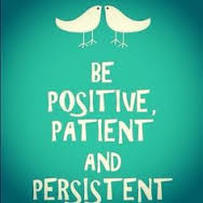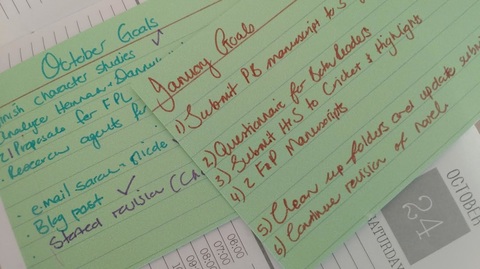 by Annie Cronin Romano For writers, receiving constructive feedback is one of the key factors to editing and revising our work. We join critique groups, participate in online manuscript swaps, and sign up for professional editing services. Sometimes even editors and agents we've submitted to will provide feedback. They might indicate what didn't work for them or offer suggestions. All this feedback is fodder for the revision file. We cull through it, often using trial and error, to figure out which suggestions improve our manuscripts and which don't. But once in a while, we get harsh feedback, an unfavorable critique, which strikes a nerve. A deep nerve. And it stings. Those manuscripts are our babies and we are protective of them. A negative analysis can make us question our story or even our writing talent as a whole. This is usually because the critique was not helpful and constructive. So what do you do when you receive feedback that's not presented in a beneficial manner? How can you turn that disappointment at a poorly presented critique into a positive step on your writing journey? A few months back, I received a detailed, yet rather harsh, rejection following a submission. It was clear the agent had read the full manuscript, which was excellent. But the criticism, helpful as I’m sure it was intended to be, was delivered in a off-putting way. It was a list of I didn’t like a, b, and c. By the end of the letter, my novel was bloodied and beaten. At least to me. I couldn’t be objective, and my writer spirit was crushed. Enter one of my amazing writing group ladies, Kelly. She read the letter, sympathized with me, and then, in a magical, extraordinary way, helped me turn the criticisms into constructive advice. She turned every “I didn’t like…” into “Try doing ‘x’.” She translated each negative into a positive, helpful piece of advice. In doing so, Kelly enabled me to use the rejection as a revision tool rather than a reason to give up on my story. Sometimes you will get critiques, or even unexpected submission feedback, that is poorly delivered. Rather than being useful, it may come across as rough and disparaging. Get out your magic wand, or favorite pen, and invert the negatives into positives. Turn the "I don't likes" into "It might work better if..." Hopefully you're blessed with those who can provide you with constructive feedback that is beneficial to both your manuscript and your growth as a writer. But if you get one of those "tear apart" reviews, take a deep breath and step away for a bit. Then take a step forward and turn those negatives into positives, and even the "bad" feedback will help you make your writing its absolute best. ~Annie
1 Comment
 by Kelly Carey Nothing gets me more motivated than a snappy little acronym and a manageable task list. With that in mind, I've decided to give my writing the WRQS! Pronounced “works”, WRQS stands for Write, Revise, Query and Submit. These four tasks are the Four Horsemen of Writing Success. (By the way, they are much better than the Four Horseman of the Writing Apocalypse; Waiting, Regretting, Quitting and Sobbing. Don’t do those!) Every month you can apply the WRQS to your writing in an easy weekly focus. Week One - Writing Your writing endeavors during the first week of every month will focus on “W” - Writing. This is a beauty of the blank page week. Open a new file and write a fresh sentence, the first draft of a picture book or a new chapter for your middle grade novel. The key this week is to write something brand new. You can bounce off an idea you jotted down during PiBoIdMo or perhaps one you wrote in the condensation on the bathroom mirror (where do you think WRQS was born?). Give yourself the first week of every month to create freely. Let go of marketing distractions and the pressure to revise. Instead, find your happiest writing self and put your wonderful words down on paper. This is your week to indulge in creating. (See Amanda’s post http://www.24carrotwriting.com/-blog/writing-a-purposeful-luxury. ) Week Two – Revise During the second week of every month you will concentrate on “R” – Revise. This is a week where you become your own critical editor and with a ruthless purpose, cut, paste and re-imagine an existing manuscript. I recommend that you pull out a manuscript you’ve let steep for a few weeks or more. Don’t pick the new piece you worked on during week one. That gem needs time away from your brain before you can look at it with a fresh perspective. Besides, that writing was your major accomplishment last week, don’t trash it already! Enjoy that victory. Pick a different manuscript to trash .... err, I mean careful revise. Week Three – Query Week three of every month should be set aside for “Q” – Query or Inquiry. This is the week for either writing query letters to agents and/or editors or doing some research or inquiry into what agents or editors may be a good fit for you and your manuscript. If you have a submission ready manuscript, and you’ve done your research and found an agent or editor that would like your piece, use this week to write a query letter. However, if your manuscripts still need a little R&R (rest and revision), this is the perfect week to troll the webpages and blogs of agents and editors to discover who they are and what they want. While weeks one and two of WRQS focused on you and your writing, week three is a time to look outward and find your publishing match. Week Four - Submit You will never be published if you don’t submit your work. Use the last week of every month to put yourself and/or your writing out into the universe by making it an “S” – Submit week. This can be accomplished in a variety of ways. The biggest leap is to submit a manuscript to an agent or editor. A word of caution, don’t do this until your manuscript has already received your best WRQ (work); write, revise, query. If your manuscript isn’t ready for submission, use this week to send your manuscript to a critique group. If you don't have a manuscript that you are ready to share, you can embracing the “S” – Submit week by marketing yourself. Work on a blog or your webpage or open yourself up by taking a class or workshop. Either way, the theme for this week is to put yourself out there and be ready for some feedback. This is your take-a-leap week. Go ahead. You can do it. Next week the month starts over and you can snuggle back into the writing cocoon and “W” – Write because you are back to week one! The WRQS method asks you to focus on a different aspect of your writing endeavors each week of the month, BUT you should be writing every week. The WRQS is a way to manage the balance of a successful writing career. I hope you join me in giving your writing the WRQS this year. We can celebrate at the end of each month with a treat (what we at 24 Carrot Writing call a carrot) - like an ice cream sundae. Just be sure to order it with the WRQS - you earned it!  ~ by Amanda Smith When I first started writing, it happened very haphazardly. For years I wanted to write, wished I had time to write, took courses and even became a member of SCBWI, but the actual writing part was sporadic. Oh, I had ideas. I had characters. I had badly written first drafts. What I didn’t have was motivation and direction. 24 Carrot Writing started as four writers who wanted to write more and better. Once a month we would get together and along with catching up and tons of laughter, we would share our goals. It started with “This month I want to…”. When we first started sharing our goals, mine were not very thoughtful. I was still fumbling in the dark, without a clear course, and I kind of pulled some goals out of thin air right there at the coffee shop. But as the months progressed I saw something happening to my goal setting. It was shifting into focus, and my writing became more purposeful. In 2015 my goals became my writing GPS. I no longer started my writing day wondering what I was going to work on, aimlessly twittering away precious minutes. I had a route and a target. And as I followed this GPS over the next twelve months, I reached destination after destination. I finished multiple picture book manuscripts and queried more agents than ever before. I streamlined my agent research so that it was meaningful and functional. I submitted to magazines, something that I previously felt I had no time to figure out. I attended multiple workshops. I purchased Scrivener, completed the tutorial, and used it to make my revision process more efficient. And most importantly, this year, I finished drafting the YA novel I started four years ago. BUT, I didn’t stop there. Where in the past I would have pitched a tent at that accomplishment, I dove right into revision. Because I had set thoughtful goals, I knew what the next step was and I was excited to take it. When Francine first shared her goal setting and reward system, I had thought that it could never work for me. I had thought I am a fly by the seat of my pants kind of writer. But giving my pants some structure made them a better fit. There are as many different ways to set goals as there are goal setters, but if you need a manageable method to organize your career, or a jumping off point, I am happy to share what I did to make 2015 my bravest and most productive writing year to date.
Sometimes the enormity of what we are trying to accomplish can paralyze us. However, breaking that enormous dream into smaller practical goals make it oh so attainable. This year, write down your goals, post them in a visible place, and let them guide your journey as you work towards your writing dreams. Goals are dreams in work boots.  Here at 24 Carrot Writing we are strong believers in setting goals and working hard to achieve those goals. We decided to share our annual goals with you hoping to motivate you to set your own writing goals. We all set our goals very differently. Some of us have detailed goals with calendar dates and self-imposed deadlines. Others have a few thoughts scribbled on a sticky note. We all, however, took time to think about what we want to accomplish in our writing career this year. We would like to urge you to do the same. Amanda Writing:
Francine Writing:
Craft:
Annie Writing:
Kelly Writing:
|
Peruse blogs for advice and tips from KidLit creatives.
Categories
All
Archives
April 2024
Click to set custom HTML
Click on the RSS Feed button above to receive notifications of new posts on this blog.
|


 RSS Feed
RSS Feed